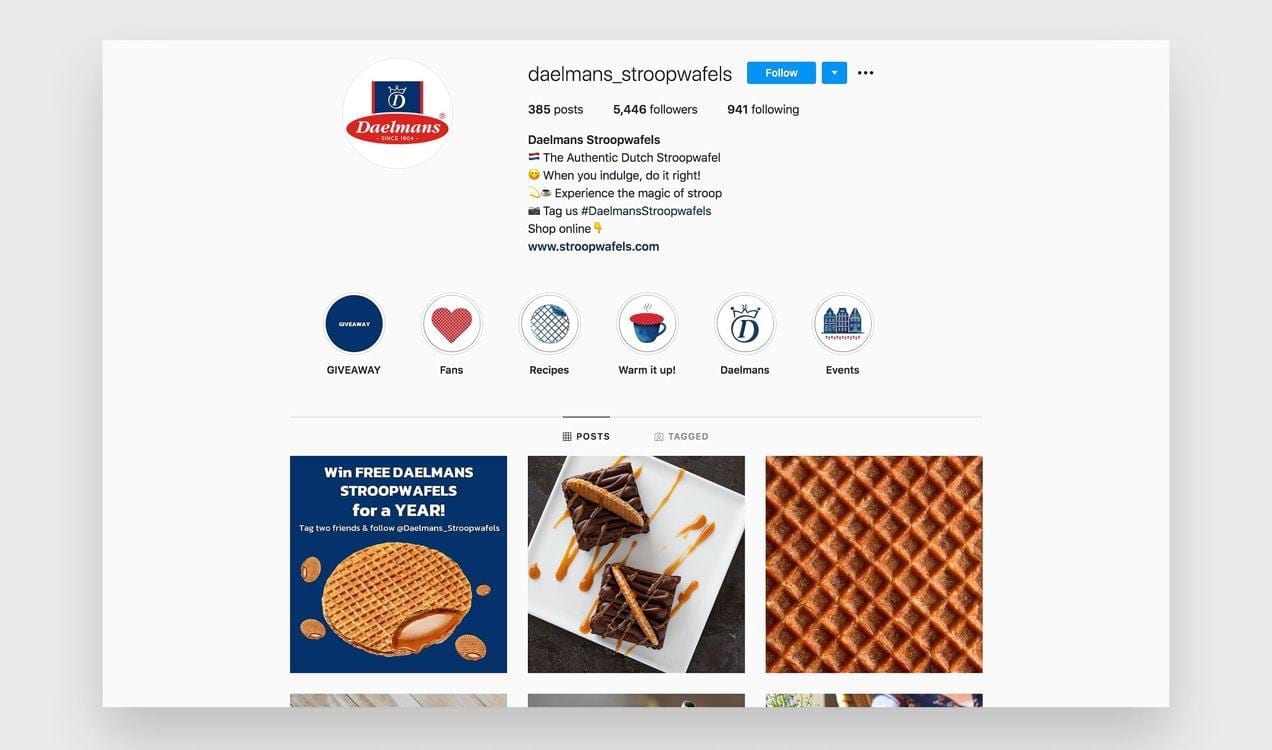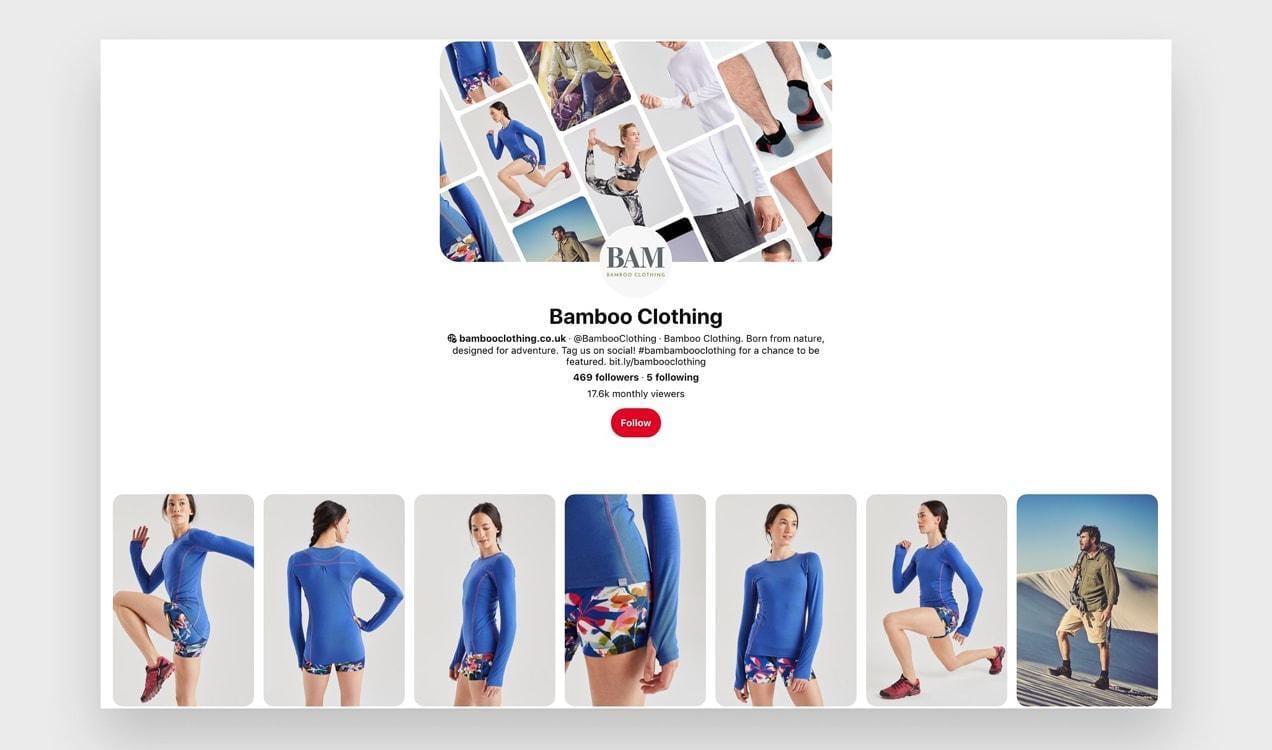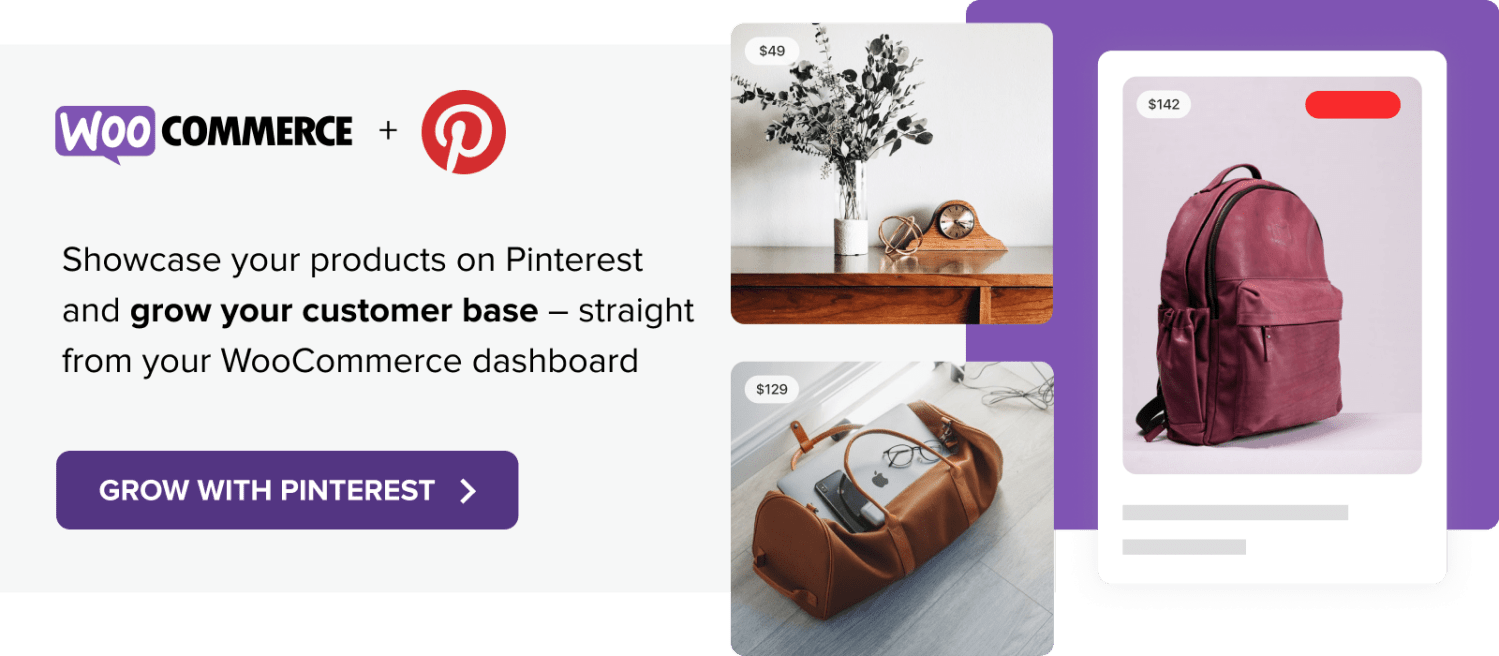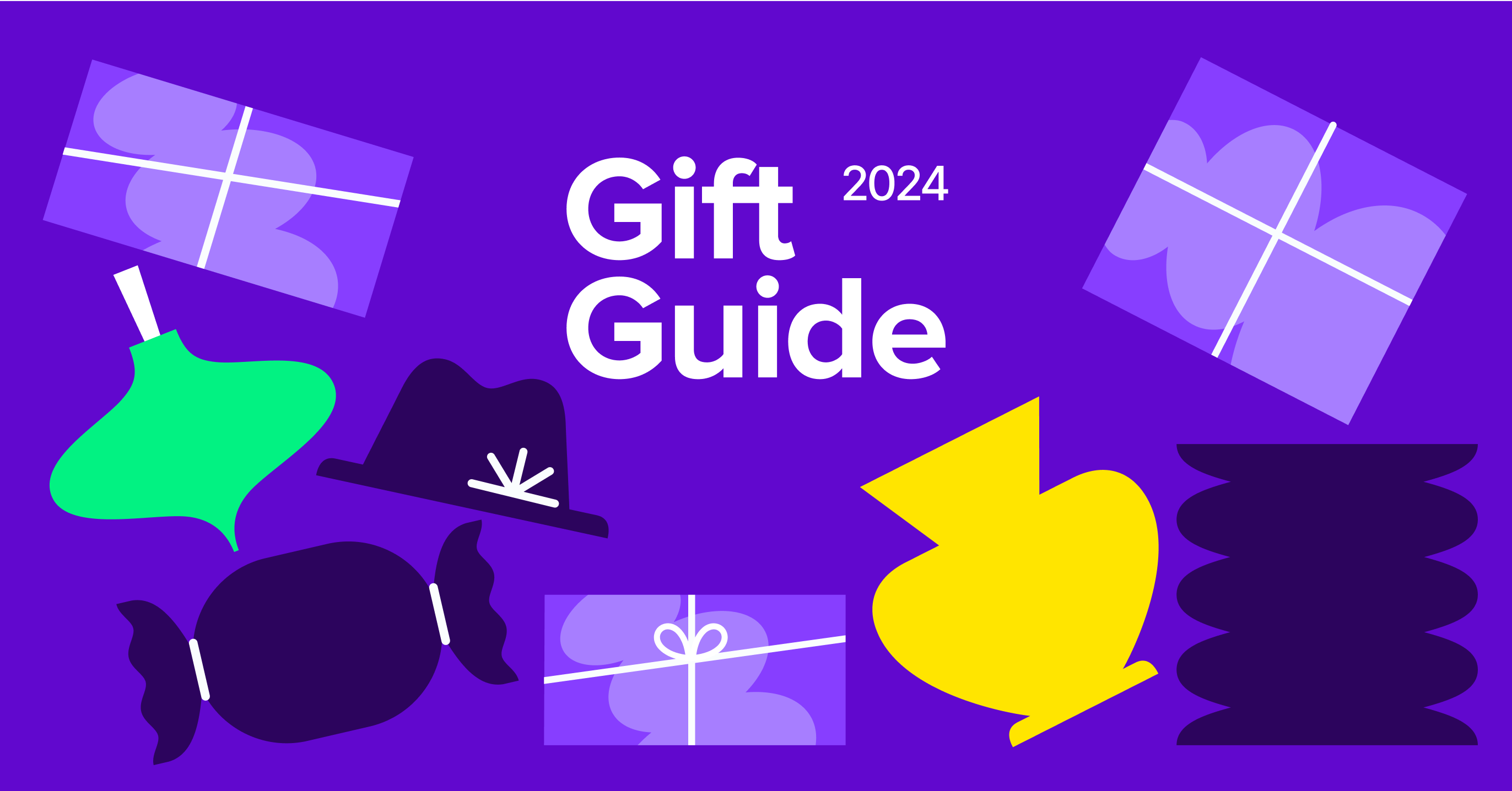As you learned in Nine Ways to Use Social Media, it can be lucrative for online stores to prioritize social media marketing. There are dozens of platforms to choose from, and each one caters to a unique audience with different interests, characteristics, and locations.
However, spreading yourself too thin keeps you from being successful. So which social media platform should you focus on and how can you make the most of your social selling efforts?
Comparing popular social media platforms
↑ Back to topWho’s on Facebook?
Facebook is the most widely-used social media platform. You can reach:
- 2.934 billion active monthly users: That’s 47.1% of the global population aged 13 and up.
- Young adults and Gen Xers: 71.2% of Facebook users are between the ages of 18 and 44.
- Mobile device users: 81.8% of Facebook users only access the platform via their mobile device.
- People with more disposable income: 75% of people with an income over $75k are Facebook users.
What can you do with Facebook?
Facebook’s robust advertising platform allows you to reach previous site visitors through remarketing, target ads based on interests and affiliations, collect leads, and promote content like videos, pictures, or testimonials.
Facebook’s communication tools for businesses also go beyond targeted advertisements. You can interact with prospective customers via comments on your posts and ads, answer questions through direct messages, and connect with fans over live streaming video.
Stores can create a dedicated business page for social media marketing and share information, gather reviews, gain followers, and interact with followers.
You can also build a Facebook shop where users can view products conveniently on the platform, then purchase them on your WooCommerce site. This extension syncs all your store data so you don’t need to manually add each product.
Pro tip: Your business page can also create public or private groups to encourage your followers to interact with one another and with your brand. Or, you can hire a marketing agency to create and manage a fan group in a way that feels more natural.
People who join groups on Facebook will be more likely to organically see the content you post in those groups than the content you post on your page. Facebook discourages organic reach of page content, but groups are a different story. Facebook actually promotes joining groups and group activity, so creating one can be effective, inexpensive advertising, as long as you work to keep members engaged.
Who should use Facebook?
While almost any brand can leverage Facebook to increase sales to one degree or another, it’s important to keep in mind that Facebook might not be the best converting tool for your business. With recent privacy changes to iOS, Facebook, and other social media, advertisers have seen a significant drop in reported conversions, which has made it difficult for businesses to tell if their ads are working.
Of course, you don’t have to rely only on ads – you can create a Facebook group for your business, invest in Facebook influencers to help market your products, and populate your Facebook shop with your items. But without paid ads, you may not see the boost in sales you’re looking for. Why? Because even though Facebook is the most widely-used social media platform, it has much lower engagement rates compared to Instagram and TikTok.
To have the best return on your investment, you may need to be willing to spend money on advertising as opposed to just relying on organic engagement. Even though Facebook has quite a low engagement rate compared to other social media channels, it still has one of the highest return on investments (ROI) for paid ads. Unfortunately, Facebook ad costs are increasing year over year, so Facebook advertising might be most beneficial if you have a healthy ad budget.
Even within paid advertising, not all ad types are equally effective on Facebook. For instance, video ads perform better than static image ads. 62% of people report being more interested in products that they’ve seen in a video on Facebook and 81% of businesses prefer video marketing on Facebook.
There are also certain industries that benefit more than others from both organic and paid reach on Facebook. If you work with or own one of the following types of businesses, Facebook may be a good platform for you:
Local retailer or service provider. Two thirds of Facebook users say that they visit a local business page at least once a week. So if you operate a restaurant, salon, or other brick-and-mortar business, you might do well to create a business page on Facebook.
Legal services. The legal industry’s click-through rate is higher than any other industry on Facebook, at 1.6%.
Fitness and health. The fitness industry has the highest average conversion rate of any industry advertising on facebook at 14.29%. Healthcare comes in fourth with an average conversion rate of 11%.
Education and employment. Education comes in second and employment and job training come in third with respective conversion rates of 13.58% and 11.73%.
Best marketing tactics for Facebook
Organic posts, content sharing, commenting on fan posts, and creating active Facebook groups are all good ways to take advantage of Facebook without paying for advertising. However, organic reach is usually limited, so paid ads should likely remain a large part of your strategy. Here are a few tips for maximizing your brand’s Facebook presence:
- Add Facebook sharing options to products on your website.
- Create Facebook posts and ads with special offers.
- Share videos and images that are engaging and entertaining.
- Use lookalike audiences to help target your Facebook ad campaigns.
- Create and actively participate in a fan group for your brand and invite anyone who has liked your page to join the group.
- Share posts from fans.
- Post 3-7 times per week.
- Reply to comments and messages.
- Integrate Facebook messenger into your CRM.
- Create and share humorous infographics and memes.
- Share content from other websites related to your industry.
- Share polls, quizzes, and other interactive content.
Ready to get started? Try the Facebook for WooCommerce extension to make the most of your efforts.
Who’s on Instagram?
With Instagram, you can reach:
- 1.22 billion people, 86.3% of whom are aged 44 and under.
- Gen Z users: it’s their top-rated social media platform of choice.
- Fans of nearly anything: fashion, cars, food, nature, art, sports, travel, wellness, and more.
What can you do with Instagram?
Instagram is a visual-heavy platform showcasing photos and videos. While you can add text and interact with followers, most people quickly scroll through their feed and stop to admire photos they like.
It’s owned by Facebook, so you can piggyback off of Facebook’s shop and advertising platforms to reach Instagram users. You can also advertise on Instagram’s platform directly, though targeting is more limited than with Facebook.
You can also take advantage of advertising that feels more organic through Instagram influencers. Influencers have become incredibly important to many businesses. In some cases, influencers are celebrities outside of social media, but many of them are famous solely for the work they’ve done on Instagram or other social media channels. By generating unique, relevant content, they’ve amassed credibility and attention from a group of people interested in a particular subject.
Partnering with the right Instagram influencer to promote your products provides instant validation for your brand story and helps you reach a very specific audience that an ad platform often can’t compete with.

Who should use Instagram?
For highly-visual brands like those related to art, design, clothing, and jewelry, Instagram is the perfect way to find more people who admire your aesthetic. It can also be effective for other types of businesses as well. Even though fashion is the most-followed industry on Instagram, other brands with large followings fall into the categories of science and nature, sports, and entertainment.
Best marketing tactics for Instagram
Develop a consistent visual aesthetic. Use fonts, colors, imagery, effects, and filters that reflect your brand identity. Keep video intros, outros, and calls to action consistent. For instance, if you use animated stickers that say “Swipe Up to Shop Now!” in your Reels, place them in the same location in each one so viewers will be accustomed to looking for it there.
Post Reels. 91% of Instagram’s users watch video content on the platform on a regular basis. Instagram’s Reels feature lets you use video, static images, filters, gifs, and text to create engaging content for your audience.
Go live. Instagram Live offers a great way to interact with your followers and showcase your products and services while answering questions from fans.
Post daily Stories. Unlike Reels, which stay in your Reels tab and feed indefinitely, Instagram Stories expire after 24 hours. Posting daily stories encourages people to stay engaged with your brand on a daily basis before your content disappears. You can post Q&As to get feedback on new products and, if you have a following of over 10,000, you can use the swipe up feature on Stories to send people directly to your website.
Remind users to click the link in your bio. Instagram doesn’t create live links to other websites when you use URLs in posts, Stories, and Reels, so it’s important to remind users to visit your website by directing them to the link in your bio.
Set up your Instagram Shop. Your Instagram Shop will let your followers purchase products directly from the Instagram app instead of trying to direct them to a link in your bio in each post. This makes it a lot easier for people to buy from you. If you have a Facebook Shop, you can sync your products directly to your Instagram Shop, making management easier and more seamless. If you don’t use Facebook, you can still set up a standalone Instagram Shop and can use the Facebook for WooCommerce extension to sync products from your ecommerce store to Instagram.
Who’s on Twitter?
With Twitter, you can reach:
- An audience of about 450 million monthly users.
- 25% of U.S. adults: The United States has the most Twitter users of any country.
- Gen Z and Millennials: 38.5% of Twitter users range between 25-34 years old.
- College-educated adults: 59% of Twitter users have a college degree or some level of college education.
- Men: While the number of men vs. women and other gender identities on Twitter in the US leans only slightly towards men, men account for 72% of Twitter’s user base globally.
- People interested in soccer: 70% of Twitter users report being fans of soccer.
- K-pop fans: In 2021 there were 7.5 billion tweets related to K-pop (Korean pop music).
- People with more disposable income: 41% of Twitter users have an income of at least $75,000/year.
- People active in politics: Even though the top 10% of Twitter users post 80% of Twitter’s US-based tweets, 69% of them tweet about politics – which makes for a large amount of political discussion on Twitter.
- People looking for news: 75% of people on Twitter actively follow news about politics and current events and come to Twitter specifically to stay updated on news stories.
- Gamers: PlayStation and Xbox have the most followers of any brand on Twitter.
What can you do with Twitter?
You can send out text-based messages, called tweets, with a limit of 280 characters. Hashtags (a system for organizing types of content) are very important on Twitter, as many people search them to find relevant tweets.
In recent years, pictures and video have become more common. Tweets with multimedia and those with hashtags consistently have better engagement. Tweets that include a hashtag are 33% more likely to get retweeted than those without hashtags. Adding an image to your tweet increases your chances of a retweet by 34%.
Unlike Facebook, where you may want to limit the frequency of your posts to once per day, Twitter’s fast-paced environment lends itself to multiple updates each day – even every hour, as long as what you say adds value to the community. The recommended number of posts per day is anywhere between one and 14, depending on what source you get your information from. The general consensus is that Twitter works best with more frequent posts, but you should test frequency to find your optimal level.
One of the other unique value propositions of Twitter marketing is their infamous and frequent “brand wars.” Brand wars are usually good-natured jabs that brands take at one another on Twitter. If the exchanges are funny enough, they can go viral and give businesses a boost in followers, sales, and overall brand reputation.
Who should use Twitter?
If you’re hoping to reach well-educated young people who are willing to learn and take a proactive role in society, Twitter might be the right fit.
It’s also useful for quick customer service responses and service updates. In particular, if you run a software as a service (SaaS) company, Twitter is a great way to let your customers know about server maintenance downtime, bug fixes, update releases, and more.
But Twitter isn’t for everyone. Twitter ranks 15th in popularity among social networks and its user base trends young and liberal, so if you’re looking to advertise to a large, older, conservative population, Twitter may not be the platform for your business.
Even though Twitter’s user base is smaller than other social media platforms, it ranks number one in brand interaction. People spend 26% longer viewing ads on Twitter than any other social media platform. There has also been a 35% year-over-year increase in global ad engagement on the platform. And if you want your brand to be seen as culturally relevant, Twitter has historically been the place to be.
Best marketing tactics for Twitter
If you decide to put effort into Twitter, implement the same strategies that the top brands on Twitter are using to engage with and cultivate followers:
- Post frequently.
- Share engaging and funny content.
- Reshare content marketing pieces relevant to your brand.
- Participate in trending topics.
- Respond to mentions.
- Post and retweet images and video content.
- Use hashtags to track engagement and campaign performance.
- Keep an approachable, informal attitude.
- Retweet posts from your followers.
YouTube
Who uses YouTube?
YouTube has nearly two billion monthly users and you can reach:
- 1.7 billion unique monthly visitors.
- Up to 81% of all internet users.
- 80% of children 11 and under (according to their parents).
- Men aged 25-34, who make up its largest ad audience.
What can you do with YouTube?
You can create and publish your own video content, sponsor popular creators’ videos, and advertise with banner or video ads. You can also target ads towards people based on interests, demographics, or purchase intent.
YouTube is owned by Google and is the second most popular search engine next to Google search. YouTube ads use the same platform as Google Adwords, remarketing ads, and Google Shopping, so if you’re already using any of Google’s advertising features, it’s relatively easy to expand into YouTube advertising as long as you have the resources to create and pay for those ads. Targeting is less precise than with AdWords – while you can predict user interests and shopping intent, it’s not quite the same as showing up when someone searches “designer flea collars for dogs.”
YouTube’s popularity as a search engine can work to your advantage if you create the right kind of video content for your business. “How-to” videos, product demonstrations, and product reviews are great ways to offer helpful advice for people searching for solutions to a problem while also building trust in your brand.
For instance, someone who’s an ideal buyer for the masonry equipment you sell might search, “how to build a fire pit.” By creating a video about that topic featuring your tools, you can earn customers and help them achieve their goals.
Who should use YouTube?
YouTube is one the the most trusted social media platforms and 70% of consumers say that they purchased a product after seeing an ad for it on YouTube. It’s possible for just about any business to benefit from YouTube advertising, but the ecommerce businesses that might get the most from YouTube are those whose products need to be demonstrated or can be showcased “DIY style.”
Videos can work for a variety of companies. You may not think that cosmetics require a lot of explanation, but makeup tutorials are very popular. If you sell online classes, creating previews with bits of high-value content can convince watchers to purchase the full course. Online retail shops that sell sewing, crafting, and art supplies can benefit from product demonstrations, how-to videos, and free on-demand video classes.
YouTube can also be its own revenue stream. Ad placements from other companies on your video content through the YouTube Partner Program or videos that are only available with a YouTube Premium subscription can help generate passive revenue as well as drive traffic to your store.
Best marketing tactics for YouTube
If you plan to use YouTube for your store, it’s important to get your marketing plan and techniques right.
- Create a YouTube channel and style it with your branding.
- Research your competitors’ channels to see how the ones with the most followers approach their video content format and schedule.
- Create professional videos and help tell your brand story while informing and entertaining viewers.
- Keep video length to 8 minutes or less.
- Use YouTube Shorts to engage mobile viewers who may have shorter attention spans.
- Experiment with livestreams and 360 videos to test if those formats are good avenues for consumer engagement.
- Spend time on SEO for your channel and videos.
- Monitor your YouTube analytics to see what’s working and what isn’t.
- Partner with YouTube influencers, when appropriate.
- Share your YouTube content on other social media platforms.
- Embed your YouTube videos on your website. Adding demonstration videos to your product page or blog posts can help shoppers better understand your products.
- Use clear, branded, graphics and text on your videos to highlight product features and calls to action.
- Use consistent intros to help viewers recognize your brand instantly.
- Create branded thumbnails that stand out from your competitors.
- Respond to comments.
Who’s on Pinterest?
With Pinterest, you can reach:
- 431 million active users, a fifth of whom are in the United States.
- More than half of all U.S. millennials.
- Women: Over 77% of Pinterest users are women – but the number of men using the platform is up 40% year over year
- Older adults. 38% of Pinterest users are 50-65 years old.
- Moms: Pinterest reaches 80% of U.S. mothers that use the internet.
- High earners: 45% of U.S. social media users with an annual income over $100,000 are on Pinterest.
- Big spenders: Pinterest users spend 80% more and have 40% larger carts when shopping online than other social media users.
What can you do with Pinterest?
Like Instagram, Pinterest’s main focus is imagery, but it also boasts a powerful search function, making it a great resource for people planning anything from this week’s dinner menu to major home upgrades, weddings, or vacations.
In fact, many people consider Pinterest more of a search engine than a social media platform. If someone searches, “healthy Italian chicken dinner recipes,” dozens of pictures will appear. Users can quickly save what they like to “boards” and come back later to make their menu.
If your business sells ingredients, consider creating a great-looking pin for a recipe that uses what you sell. Someone may choose that recipe, see your product, and include it in their grocery list.

Who should use Pinterest?
Pinterest is a unique marketing channel partially due to its user demographics. In the US, women account for 85% of consumer spending. Since Pinterest’s user base is dominated by women – especially higher-income, older, women who tend to shop and spend more – it can be an excellent opportunity for advertisers.
Unlike other major search engines like Google, 97% of searches on Pinterest are unbranded, which levels the playing field for small businesses advertising and pinning on Pinterest. Pinterest also brings in 33% more referral traffic than Facebook. If you have a small ecommerce business and are looking for an economical way to reach an audience of reliable spenders, Pinterest could be a great platform for you.
Best marketing tactics for Pinterest
With most social media platforms, people are interested in being entertained, gaining information, and interacting with their friends. For marketers, you have to interrupt this experience with your message and hope that users react positively. But Pinterest can be exceptionally lucrative for businesses, because people actively use it to plan purchases:
- 83% of regular users make purchases based on what they’ve seen on Pinterest.
- Shopping ads on Pinterest drive three times more conversions than on other social media platforms.
- 85% of Pinterest users consider it their go-to platform when starting to work on a project.
If your products are very visual or are related to life events that require planning – vacations, home renovations, weddings, parties – you can thrive on Pinterest.
Pro tip: Group boards are a great way to maximize your time on Pinterest. A group board is built around a specific topic – outfit ideas, healthy recipes, educational resources – and all of the members contribute pins.
Because the content you post on a group board reaches your followers AND the followers of the other members, it gets a lot more organic reach. You can join boards directly on Pinterest or use tools like Tailwind Communities to find like-minded businesses.
Other steps to take when developing your presence on Pinterest include:
- Create a Pinterest for Business account.
- Use keywords in the titles of your Pinterest boards.
- Add a short description to your pins and link back to your website in both the pin source and description areas.
- Use vertical images to maximize your space.
- Embed pins on your blog and share on other social media channels.
- Use Rich Pins. Rich Pins are post types on Pinterest that are reserved for Pinterest for Business users. They include extra information on pins like metadata and real-time pricing for products. There are three different categories of Rich Pins – products, articles, and recipes.
- Build tips boards and collaborative boards to inspire more user interaction with your brand.
TikTok
Who’s on TikTok?
TikTok has over one billion monthly active users – more than Twitter and Pinterest combined. TikTok is a social video platform that’s especially popular with younger demographics, but more than 37% of TikTok’s users are over 30, so it shouldn’t be written off as an app that’s just for teens and twenty-somethings.
With TikTok, you can reach:
- Gen Z: 60% of TikTok users belong to Generation Z (born between 1997 and 2012). In 2023, Gen Zers will be the largest generation in the U.S., with around 74 million people.
- A global audience: TikTok is available in 154 countries with a total of 2.6 billion downloads worldwide.
- More engaged users: TikTok’s users spend an average of 1.5 hours a day using the app – twice as much as Facebook and Instagram.
What can you do with TikTok?
TikTok has advertising opportunities that are similar to other social media platforms, but it also has some unique and creative options that you can’t find elsewhere.
Like most other social media platforms, TikTok offers in-feed ads. In addition, they offer Brand Takeovers and TopView ads.
Brand Takeover ads are full-screen ad pop-ups that display as soon as a user opens the app and last between three to five seconds. Brand Takeover ads are reserved for one brand per day, so for that day all of TikTok will see your ad when they open the app, and your ad only. Since these ads take up exclusive real estate and have 100% platform reach, they’re very expensive to run and are usually used by large corporations.
TopView ads share a similar format to Brand Takeover ads. They’re full screen and are the first thing a user sees when opening up the TikTok app. However, they aren’t exclusive, have a smaller reach based on your target audience, and can last up to 60 seconds.
Influencer marketing is different on TikTok. Not only can you contract with influencers to do paid posts for your brand, you can also sponsor a Branded Hashtag Challenge. This is when you invite TikTok creators to post video content of themselves performing a specific action that’s related to your brand (even if it’s only the hashtag that relates to your brand).
You can create branded filters, stickers, and even AR lenses that any TikTok user – not just your paid influencers – can add to their videos. These graphic elements can also enhance Branded Hashtag Challenges.
Who should use TikTok?
If you’re looking for creative new ways to market your products to a younger audience, TikTok may be a great platform for your business. Products that do well on TikTok include makeup and skincare, home decor, cleaning products, lighting, kitchen appliances, tech gadgets, and jewelry.
Best marketing tactics for TikTok
- Set up a TikTok for Business account.
- Post frequently – 1-4 times per day.
- Share behind-the-scenes, unboxing, and other informal content.
- Participate in trending duets and use trending music in your posts.
- Repost content related to your brand.
- Use TikTok’s livestreaming feature to engage with followers.
LinkedIn has nearly 850 millions users, and you can reach:
- 211 million people in North America.
- A global audience: 74% of users are outside of the U.S., including 222 million in Europe.
- Young professionals: a whopping 60% of LinkedIn’s users are 25 to 34 years of age.
- Businesses: 58 million companies are on LinkedIn, and four out of five people on LinkedIn drive business decisions in their companies.
LinkedIn is definitely a platform for those looking to start or advance their career, along with companies seeking talent.
What can you do with LinkedIn?
You can create a company page to post updates, pictures, and other content. Your team members can also attribute their employment to your page.
LinkedIn’s advertising capabilities are perfect for hiring new staff or forming business relationships and, like many other social media platforms, you can target previous website visitors or upload customer lists.
The best part is your ability to target people with employment in precise industries, with certain job titles, or who are part of specific companies. So if you want to reach all the sales reps that work at businesses in your industry, you can do that pretty effectively.
Who should use LinkedIn?
If you’re looking for new team members, sell to other businesses, or offer products that professionals might find useful – clothes, gadgets, time-saving meals, office furniture, etc. – LinkedIn is the place for you.
Best marketing tactics for LinkedIn
- Create a branded company page on LinkedIn.
- Determine your target audience and use LinkedIn’s Content Suggestion Tool to share relevant content from within LinkedIn with your followers.
- Post about trending topics in your industry and link back to helpful articles or products on your website related to those topics.
- For every post promoting your company or products, share 4-5 posts from other sources about relevant topics.
- Keep posts to 3-7 per week.
- Use images and videos in your posts.
- Tag industry influencers.
- Create your own LinkedIn group, join other groups, and be active in discussions.
- Use LinkedIn’s marketing and analytics tools to create retargeting campaigns and track performance.
- If you have employees on LinkedIn, ask them to reshare company content to extend your reach.
- Take advantage of LinkedIn’s InMail. InMail gets 300% better response rates than traditional email.
Examples of social media for ecommerce in action
↑ Back to topTo give you some inspiration on how you might best use social media marketing to grow your business, we’ve created two fictional companies and outlined how they might use several platforms.
Service and retail combo: WooGroom
Introducing WooGroom! Our fictional dog grooming company has a physical location where they provide services and sell products in store. They also have an online shop that offers grooming tools.

Facebook:
Facebook is WooGroom’s home base for all things social. There, they post reviews, display their address and contact information, and share irresistible dog photos and helpful blog posts. They’ve also connected their WooCommerce shop to sell more easily on Facebook and Instagram.
WooGroom knows that content is king, which is a big part of why they use WordPress and WooCommerce together. Each week, they publish a blog post about dog grooming and use Facebook’s remarketing pixel to share those posts – along with new offers – with people who visited their site in the past.
By regularly showing adorably-groomed dogs along with great reviews, they’ll prove their value to potential customers. They don’t constantly advertise special offers, but when they do, many of their followers become new, happy customers!
Pinterest:
WooGroom creates new pins every day, showcasing before and after photos, new products, and tips for home grooming.
They post pictures featuring different kinds of dogs, colors, and styles to connect with everyone in their audience. And since they know how powerful Pinterest’s search engine is, they add relevant hashtags so they show up to potential customers. They also join a Pinterest group board about pet care, and reach a whole new group of dog owners.
WooGroom gains followers who appreciate seeing cute animals in their feed. Most of them are dog owners and many purchase shampoos and other supplies from their online store.
Instagram:
People love to follow animals on Instagram – Jiffpom has almost 10 million fans. Our groomer posts photos of beautiful dogs and, with some advertising and effort, connects with local pet owners who want their pooch to look just as cute.
WooGroom also partners with an influencer who shares photos of her dogs after they’re groomed and posts videos using their products.
TikTok:
Alaskan Klee Kais, Kieren and Yasmin, boast 4.2 million followers on TikTok. Like Instagram, TikTok users love their pooches. WooGroom created some branded husky-themed AR lenses and stickers for TikTok users. WooGroom also films their own dog grooming video content featuring their products and posts with their #WooGroom hashtag.
They repurpose their TikTok videos across other social media platforms like Facebook and Instagram.
YouTube:
WooGroom creates how-to videos that provide value to users who want to groom their dogs themselves, but this also leads to new business, since viewers are impressed with WooGroom’s work. This is an appropriate way to “show off” and is often much better received than a disruptive ad.
During these videos, WooGroom finds a way to naturally feature some of their retail products and include links to purchase. There’s no need for them to do a long sales pitch, but they reference more helpful content on their site. After YouTube viewers read that content, WooGroom can reach them again with remarketing ads and turn many of them into customers.
Service-based business: WooFirm
When you think of social media, lawyers, accountants, and financial advisors may not immediately come to mind. But if they can use it to provide value to their ideal audience, they too can succeed. Here’s how our fictional accounting office, WooFirm, would use social media for ecommerce:

Twitter:
Since people on Twitter often engage with current issues, WooFirm joins the conversation about recent financial events with helpful tips and knowledge. Hashtags are possibly more important on Twitter than any other platform, so WooFirm uses them to find conversations about relevant topics.
Someone might tweet, “Stuck on this QuickBooks issue. Why are my sales taxes not calculating correctly?! Any #accountants on here? #help.” By responding quickly, WooFirm gains a new follower and a future client.
LinkedIn:
WooFirm creates high-quality thought-leadership blog posts on their WordPress site and distributes them on LinkedIn to establish credibility with potential clients. They use LinkedIn’s advertising platform to reach specific business types and people with relevant job titles.
When WooFirm has job openings, they post them to LinkedIn and advertise to everyone with accounting-related education in their area.
WooFirm’s sales team uses LinkedIn to connect with old colleagues and build relationships that turn into new business.
Facebook:
WooFirm’s clients are on Facebook, so it’s a great place to house general business information and share updates, blog posts, and offers.
They also use Facebook to remarket to prospective clients with non-intrusive, valuable content and advice.
YouTube:
WooFirm knows that YouTube viewers often search for solutions to problems that they can solve. By answering common accounting-related questions, demonstrating an Excel trick, or showcasing a faster way to complete a task in QuickBooks, they reach business owners in a non-intrusive way and turn many of them into clients.
They also interview a client once a month and turn that into a three-minute video that tells a quick story and praises their services. In addition to YouTube, WooFirm posts this video to Facebook, LinkedIn, and their own site using Jetpack’s video hosting for WordPress.
Get started on social media
↑ Back to topAlmost any business can be successful on social media; the trick is to pick the right platforms and focus your effort. Use each one for its greatest strengths instead of posting the same content everywhere. By combining a series of touch points, you can expand your audience, demonstrate expertise, build excitement, capture new buyers, and develop customer loyalty.
Want more information or help with social media for ecommerce? Check out these resources:
- Six Ways to Turn Social Media Followers into Sales
- How to Create a Regular Flow of Social Media Content
- Nine Ways to Use Social Media
- Our full library of social media extensions
About





Muy buena colaboración, especialmente para gente que no tenemos conocimientos profesionales en redes sociales, me ayudó este resumen un 50 % a NO tener tropiezos. Saludos, espero una siguiente publicación.
Employee provident fund (EPF) is a national scheme, practiced in the https://epfouan.com/s/epf-balance-check-with-or-without-uan-number/ Indian country. The national and state government advocates for all employees to pay their EPF. This happens at the onset of employment where the employer and employee gave a certain amount. The fraction of the money is saved at the employee EPF account to cater for retirement. Full step by step procedure to check EPFO PF balance check with (or) without UAN number.
Social media has become a powerful tool for businesses of all sizes in promoting their products, connecting with customers, and driving sales. For ecommerce businesses, social media is an essential part of an effective marketing strategy.
The key to success when using social media for ecommerce is to choose the right platforms. Different platforms are better suited to different goals and objectives. For example, if you want to drive sales, then Instagram and YouTube are ideal for creating product videos and visuals that can be used to drive traffic to your website. If you want to build relationships with customers, then Twitter and Facebook are better options for engaging with customers in a more personal way.
When choosing social media platforms, According to Online Class Help it’s important to consider the type of content you plan to share. Different platforms are better suited for different types of content. For example, if you’re looking to share short, visual content, then Instagram is a great choice. If you need to share longer form content, then YouTube is a better option.
It’s also important to consider the demographics of each platform. Different platforms have different user demographics, and you’ll want to make sure that you’re reaching your target audience.
Finally, it